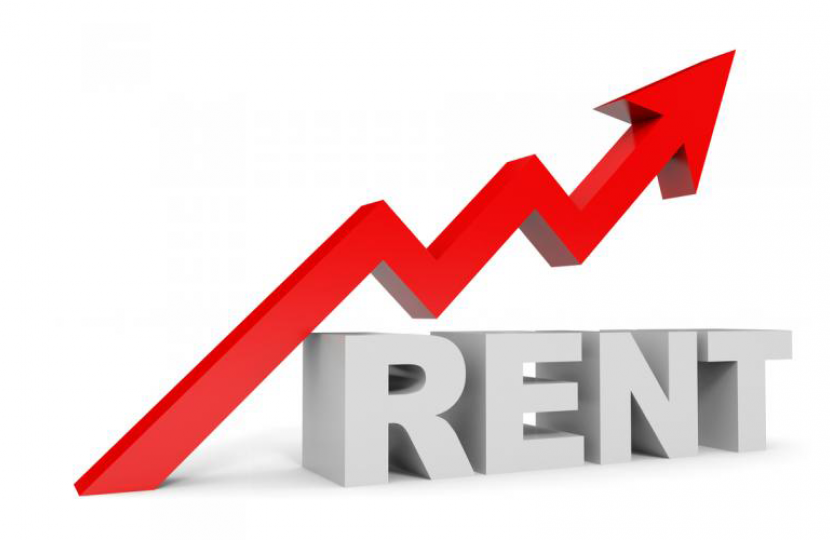Inflation went in the wrong direction at the end of 2023. It might seem like a small, possibly insignificant, reversal of a downward trend, but December’s rise in the consumer prices index (CPI) to 4% in December from 3.9% in November is a blow to the government and the Bank of England in their battle against rising prices.
Setting aside the quirks in the figures, such as the rise in tobacco prices after a sharp increase in duty, the real problem was how businesses continue to charge each other ever-larger bills for their services.
Last year they had good reason to put up prices. They had higher gas and electricity prices to pay and workers had begun to play catch-up in annual wage demands to prevent a potentially huge drop in their living standards. Those pressures are ebbing away now, but still services firms are charging ever higher amounts for their work, and that is being passed on to consumers.
Competition is supposed to prevent this happening. And while it seems to be influencing sectors such as food, where price inflation is coming down, in the areas of the economy most of us cannot see – the myriad of buying and selling for business and financial services – compettion is failing to work its magic.
Core inflation, which excludes items such as energy, food, alcohol and tobacco, was unexpectedly unchanged at 5.1% and services inflation increased from 6.1% to 6.2%.
There are analysts who believe the Bank of England will be influenced by the latest figures to caution against any predictions of interest rate cuts. Financial markets expect five rate cuts this year, taking the cost of borrowing down from 5.25% to below 4%. Perhaps now there might only be fewer and starting later than May when investors believe the process will begin.
Officials at the US Federal Reserve and the European Central Bank, which covers the 20 members of the eurozone, have made more cautious speeches in recent days about the path of interest rate reductions. France, Germany and the US have seen the same blips in the downward path of inflation.
The UK is expected to see a small rise in January’s figures when they are published next month, which economists are ready to put down to dramatic falls in energy price inflation last year that declines over the subsequent 12 months could not match. A rise in CPI for December and again in January will certainly make the Bank think twice about signalling sharp cuts in rates. It could judge that services companies need more harsh medicine in the form of high interest rates to force them to bring down prices.
If that is the Bank’s solution, Jeremy Hunt’s plan to boast of sharply falling interest rates during an election campaign will look be toast. There are still 1.5m households waiting to remortgage this year and their finances will look burned as well.
Then again, much-predicted declines in the CPI during February, March and April, taking inflation down to 2% – notwithstanding an escalation of the Middle East conflict and its effect on shipping – could prove financial market bets to be more savvy than they currently look.
Rent rises outstripping inflation for past 9 months

A leading lettings agency says 2023 was a record-breaking year for rental growth.
The average rent on a newly let property in Britain rose 10.2% year-on-year in December, marking the strongest end of year growth since Hamptons’ records began in 2014 and surpassing December 2022’s previous record of 7.7%.
This cost the average tenant who moved into a new home an average of £124 a month more in rent, equating to an extra £1,488 each year.
Rents have risen faster than inflation for the last nine months.
Between March 2023 and November 2023 (when the latest Consumer Price Index inflation data was available) rental growth outpaced inflation by an average of 3.5% each month. This reversed the trend seen nine months previous when inflation reached a 41-year high.
Pre-Covid, however, rents were rising at an average of 1.1% faster than inflation each year.
While the pace of rental growth has cooled a little from its 12.0% peak in August, it hasn’t slowed as quickly as inflation and there are few signs that it’ll significantly slow any time soon, says the agency. The rise in rents predominantly reflects higher landlord costs coupled with a lack of homes available to rent, which is unlikely to change significantly in the short to medium term.
On a regional basis, tenants in the East of England faced the biggest rent hikes. The average rent on a newly let property in the East of England hit £1,299 pcm in December, a record 13.3% or £153 pcm more than 12 months ago.
Rents in Greater London, the Midlands and the North of England also saw double-digit hikes in 2023.
Looking ahead, as mortgage rates continue their downward path, some of the upward pressure on rents should reduce. This will predominantly occur because fewer landlords will face such steep increases in remortgaging costs as those who refinanced in 2023. However, lower rates might also enable more renters to become homeowners, reducing demand. Even so, rents are likely to continue rising much faster than the pre-Covid average (2.6%) over the next few years.
Hamptons is forecasting rents on newly let properties across Great Britain to rise 7.0% in 2024, followed by 5.0% in both 2025 and 2026.
Aneisha Beveridge, head of research at Hamptons, says “pressures on the rental market show few signs of abating. Rental growth has been more persistent than wider inflation, predominantly due to the scale of the costs faced by most landlords as a result of higher interest rates. Slightly lower mortgage rates in 2024 should alleviate some of these pressures and take some of the heat out of the rental market, but tenants will probably continue facing bigger rent increases than they did pre-Covid.”

